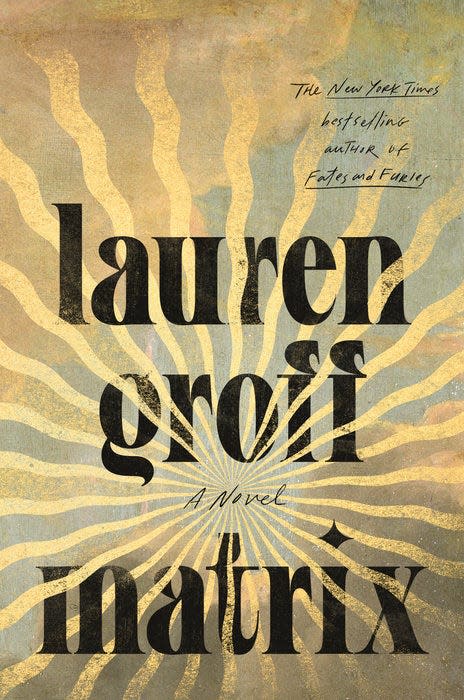A rebel nun transfixes in Lauren Groff's medieval masterpiece 'Matrix'
- Oops!Something went wrong.Please try again later.
- Oops!Something went wrong.Please try again later.
It’s the 21st century, and every day, everywhere, men are ruining things for women. Why not escape with Lauren Groff to an English abbey in the actual Dark Ages, where you can at least hang out with a bunch of witchy nuns?
“Matrix” (Riverhead, 272 pp., ★★★★ out of four) is the award-winning author’s sixth book and fourth novel, and it’s a relentless exhibition of Groff’s freakish talent. In just over 250 pages, she gives us a character study to rival Hilary Mantel’s Thomas Cromwell or Robert Caro’s Robert Moses. Groff’s Marie de France is based on a historical figure, the first female poet published in French, whose biography is almost entirely unknown. The Marie of “Matrix” is a bastard half-sister of King Henry II of England, cast out of court at 17 by Queen Eleanor of Aquitaine, the mercurial lifelong object of Marie’s romantic affections.
She is sent alone on horseback to become prioress of an abbey so impoverished, nuns and child oblates are starving to death by the week. At first, she holds out hope that Eleanor will call her back to court, but her fate is sealed: She spends the rest of her life at the abbey, cloistered with her fellow nuns.

Marie is ambitious and cunning, protective and nurturing; she becomes abbess, and the abbey prospers under her guidance. A proud poet-abbess, a rebel nun who loves and craves power, she rules her domain like a philosopher king, or at least a philosopher don – a 12th-century Michael Corleone in a habit and scapular. She commands awe and respect, armed with a strength that is both female and explicitly unfeminine – “too-huge woman on her warhorse, crusader, abbess of unwomanly face and body and knowledge and force of will” – especially in the suspicious eyes of the crown and church.
After 30 years at the abbey, she starts to have visions: “And upon the woman’s head she wears a crown of stars; and this is how Marie knows her to be the Virgin Mary, whose face is hidden by the blaze of twelve suns.” These visions, in concert with Marie’s own ambition, move her to fortify the abbey, to close it off from the world and keep it within her benevolent authority, where “her daughters would be removed, enclosed, safe. They would be self-sufficient, entire unto themselves. An island of women.” There is sex on this island, and violence and sacrilege. There is spying and control, and there is love and industry and sisterhood.
Of course, Marie’s divine inspiration and ability come not from God, but from her creator Lauren Groff, who uses her insight and marvelous prose to give life to this formidable medieval nun and “this strange abbey that she has built around her as a shell, a cathedral, a home.” “Matrix” is an unforgettable book – Marie, falling to her knees in a forest before Eve and the Virgin Mary, watching “her kiss her with the kiss of her mouth” – ecstatic, refulgent, God-struck, heretical.
This article originally appeared on USA TODAY: 'Matrix': Lauren Groff's rebel nun transfixes in medieval novel
